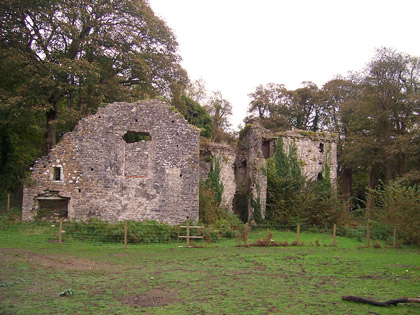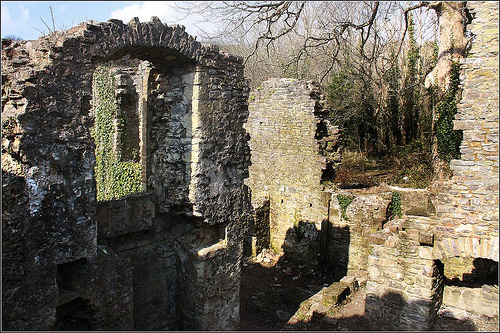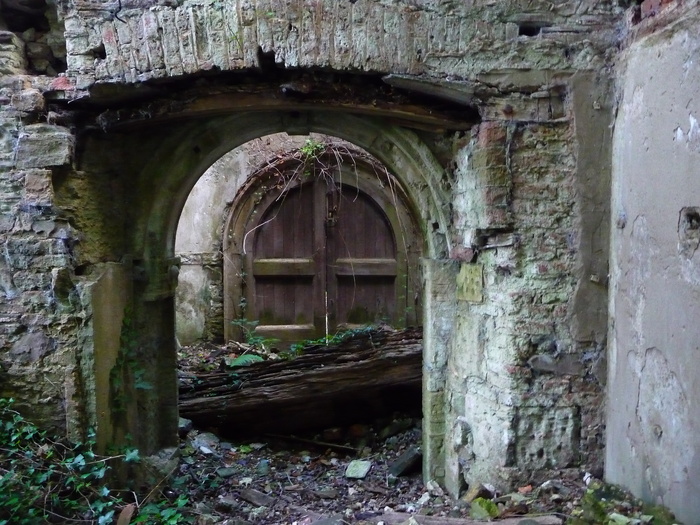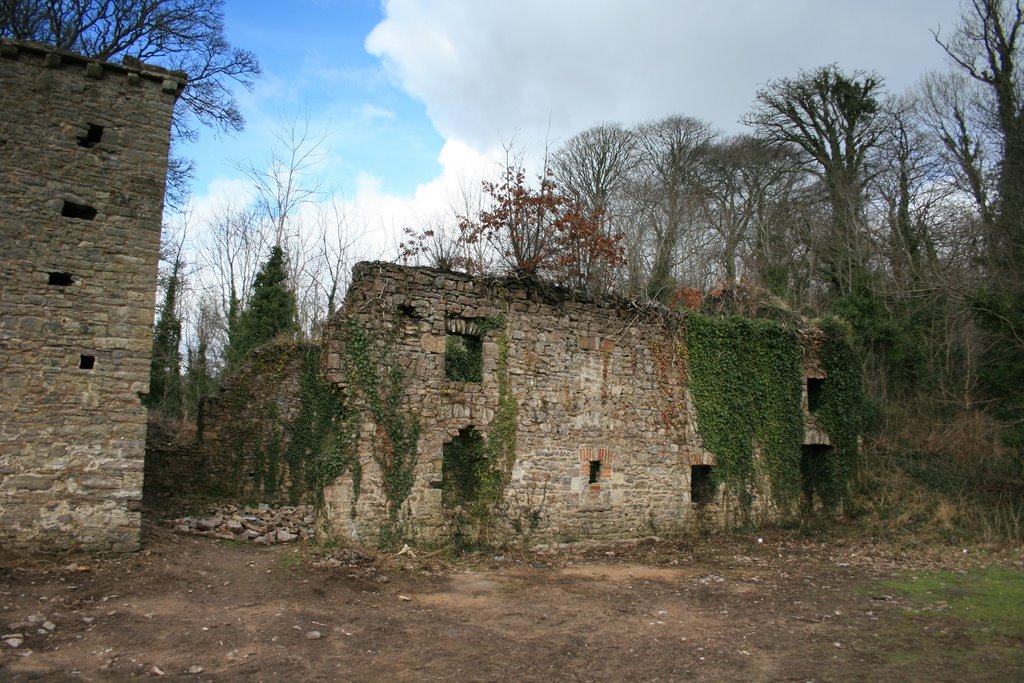Candleston Castle is a 14th-century fortified manor house, in ruins since the 19th century. It is .75 miles (1.21 km) southwest of Merthyr Mawr, former Glamorgan, Wales, now Bridgend county borough and just .75 miles (1.21 km) northwest of Ogmore Castle, separated by the River Ogmore. Candleston's original long and narrow rectangular structure lay across the western end of a low narrow promontory, suggesting a defensive position. The castle is believed to be named after the Norman family of Cantilupe, thought to be its first feudal tenants.
Geography
The ruins of Candleston, which had been part of a medieval settlement, stand on the Merthyr Mawr Sand Dunes, on the edge of the Merthyr Mawr Warren. They are east of Porthcawl off of Swansea Bay.
History
15th – 19th centuries
Candleston passed through Joan Cantilupe Horton and Sir William Horton's son Jenkin, who may not have resided at Candleston, to Jenkin's daughter Jennet or Janet. The manor then went to the Cradocks when Janet married Richard Cradock about 1468. Nicholas Horton briefly resided at Candleston and paid a small quit rent in 1411 for what is believed to be Candleston to the lord of Merthyr Mawr.
Joan Robert, reported to be the daughter of Margaret Cantilupe, married John Eyre. In 1412 and 1429, Eyre is recorded as Candleston's landholder. Janet Horton and Richard Cradock received Candleston, possibly because the Eyres did not have children or due to the nature of their tenure.
Janet and Richard Cradock's son, Sir Mathew Cradock (about 1468–1531) inherited the property. During his career, he was steward of Gower, Chancellor of Glamorgan and constable for life of the Kenfig and Caerphilly castles. In the late 15th century the manor was refurbished and modified; It is believed that Mathew Cradock was responsible for the construction. His only child, Margaret, was heiress of the manor. Sir Richard Herbert married Margaret. He was from Ewyas, Hereford. About 1500 alternations were made to the Hall range. It had a four-centred, local green sandstone ogee arch, pointed and chamfered arch tower, parapet corbelling of the roofs, and an "impressive perpendicular chimneypiece".
George Herbert of Swansea inherited Candleston from Margaret and Sir Richard Herbert. Mathew Herbert, George's son then held Candleston. Brothers, grandsons of Sir George Herbert, had the manor next. First, Sir William Herbert had the manor in 1598, then Sir John Herbert inherited the manor after his brother's death in 1609. Sir John died in 1617 and Mary, his daughter and heiress, married Sir William Doddington.
Robert Greville, 4th Baron Brooke of Warwick married Doddington's granddaughter. His brother inherited the property upon his death in 1676. Francis Greville, great-grandson of the brother, was Earl of Warwick and 8th Baron Brook. The manor was held by the Grevilles, visited only occasionally, made only minor modifications, and sold to the Franklen family in the 18th century. Between 1806 and 1808, Sir John Nicholl resided at the manor while his manor was built. Candleston Castle was sold by Richard Franklen to Nichol in 1830, when it was said to have included a drawing room, dining room, breakfast rooms, four bedrooms, a coach house. It was evacuated in the 19th century, after having operated as a farm house.
In the early 19th century modifications included construction of a stable, the castle was crenellated for ornamental purposes and a defensive tower was built. The stepped base of a Calvary cross, of unreported date, with the fallen cross itself lying alongside, was found near the windmill uncovered by sand in 1823.














